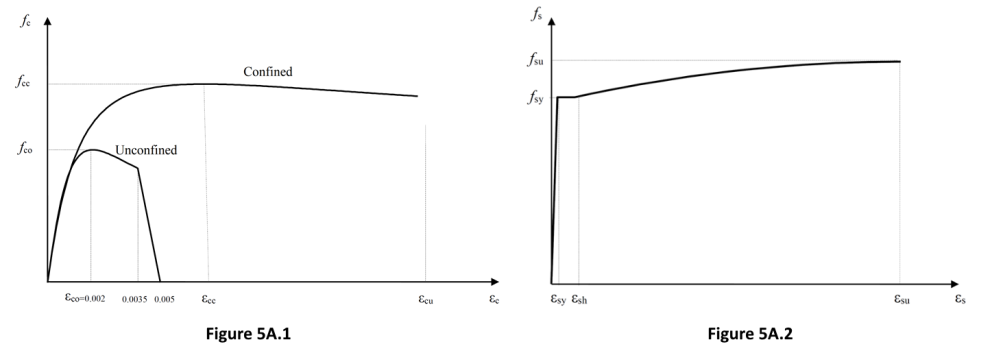15.2.12
Information level coefficients are used to calculate reinforced concrete element capacities in the performance analysis of existing buildings. Knowledge levels are classified as limited knowledge level and comprehensive knowledge level. The existing material strengths are multiplied by the information level coefficients and the element capacities are calculated using the moment-curvature calculation.
The knowledge level of existing buildings is selected by the user.
Element capacities are automatically calculated according to the current material strengths according to the selected knowledge level.
ICONS
f ck = Concrete characteristic compressive strength
f co = Compressive strength of unwrapped concrete
f yk = Characteristic yield strength ofreinforcement steel
f sy = yield strength of reinforcement steel
The Knowledge Level Coefficient given in Table 15.1 of the TBDY is applied in the personnel capacities according to the knowledge level selected by considering the measurements explained in 15.2.4 and 15.2.5 as specified in Article 15.2.2 of TBDY . Available material strengths are used in the calculation of element capacities and these values are the values obtained in the measurements. According to the knowledge level of the building, the current material strengths are multiplied by the information level coefficient and the member capacities are found.

The element capacities are found by the moment-curvature relationship created by using material models found with the stress-strain relations of concrete and reinforcement steel .
Available material strengths are the characteristic of the material or the strength obtained from samples taken from the building. This characteristic compressive strength is called f ck for concrete and the characteristic yield strength f yk for reinforcement .
For example, in a concrete class of C25, the characteristic pressure is concluded as 25MPa as a result of the measurements. In this case, the characteristic compressive strength of concrete is f ck = 25 MPa.
If this concrete class is to be used in the ŞGDT approach for an existing structure and the level of knowledge is selected as "comprehensive", the concrete compressive strength used when defining the plastic joint is f co = f ck = 25 MPa.
If this concrete class is to be used in the ŞGDT approach for an existing structure and the knowledge level is selected as "limited", the concrete compressive strength used when defining the plastic joint is f co = 0.75f ck = 18.75 MPa.
For example, in a reinforcement in S420 class, the characteristic yield strength as a result of the measurements is concluded as 420MPa. In this case, the characteristic yield strength of the reinforcement is f yk = 420 MPa.
If this reinforcement class will be used in the ŞGDT approach for an existing structure and the information level is selected as "comprehensive", the reinforcement yield strength used in defining the plastic joint is f sy = f yk = 420 MPa.
If this concrete class is to be used in the ŞGDT approach for an existing structure and the knowledge level is selected as "limited", the reinforcement yield strength used when defining the plastic joint is f sy = 0.75f yk = 315 MPa.
After the concrete compressive strength f co and reinforcement yield strength f sy values are found by using the existing material strengths and the coefficient of knowledge level, Stress-Strain Curves for Concrete and Reinforcement Materials the material stress-strain relations described in detail in ( ) are created. The following picture shows the stress strain graphs of concrete and reinforcing steel, respectively. Plastic joint definition is made as a result of the moment-curvature graph obtained using these relations .

